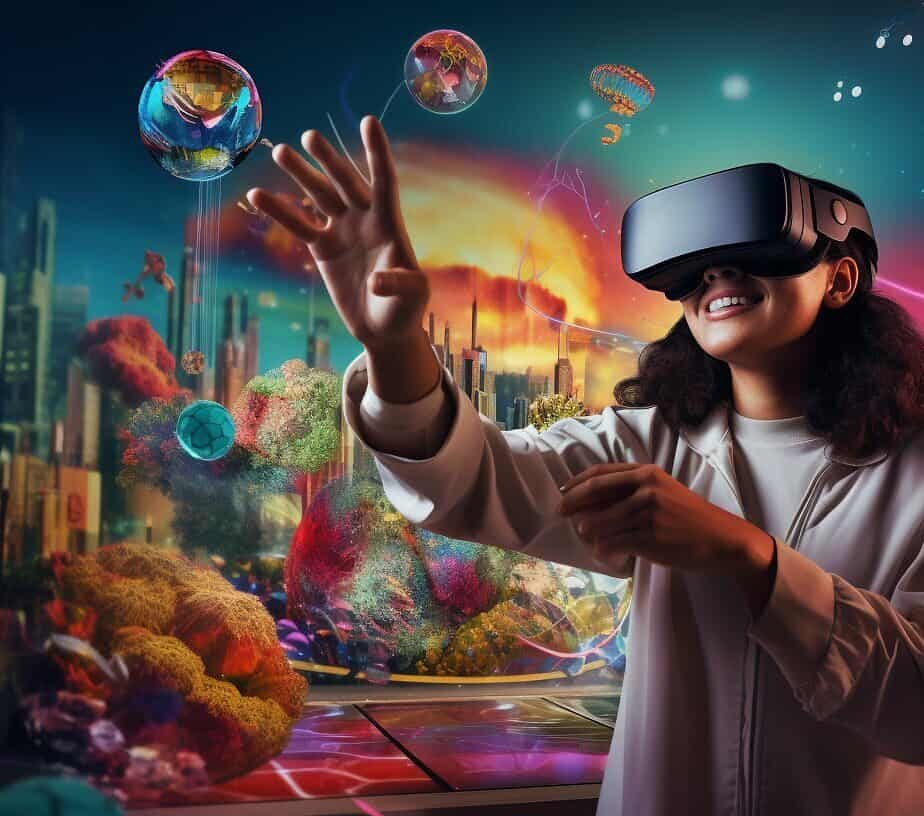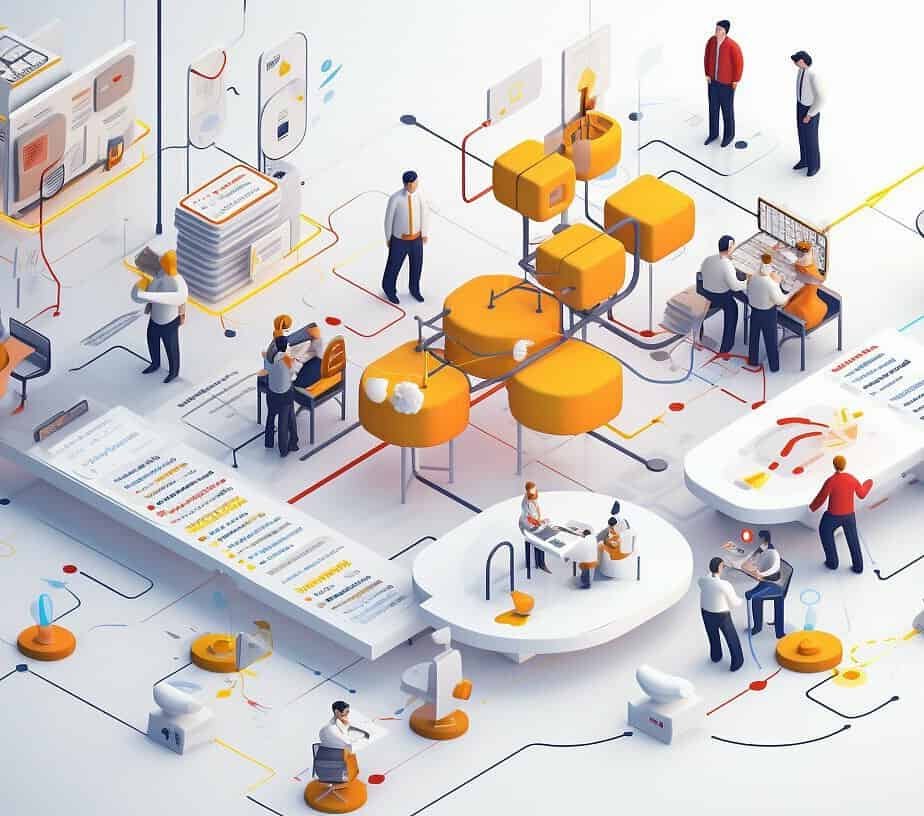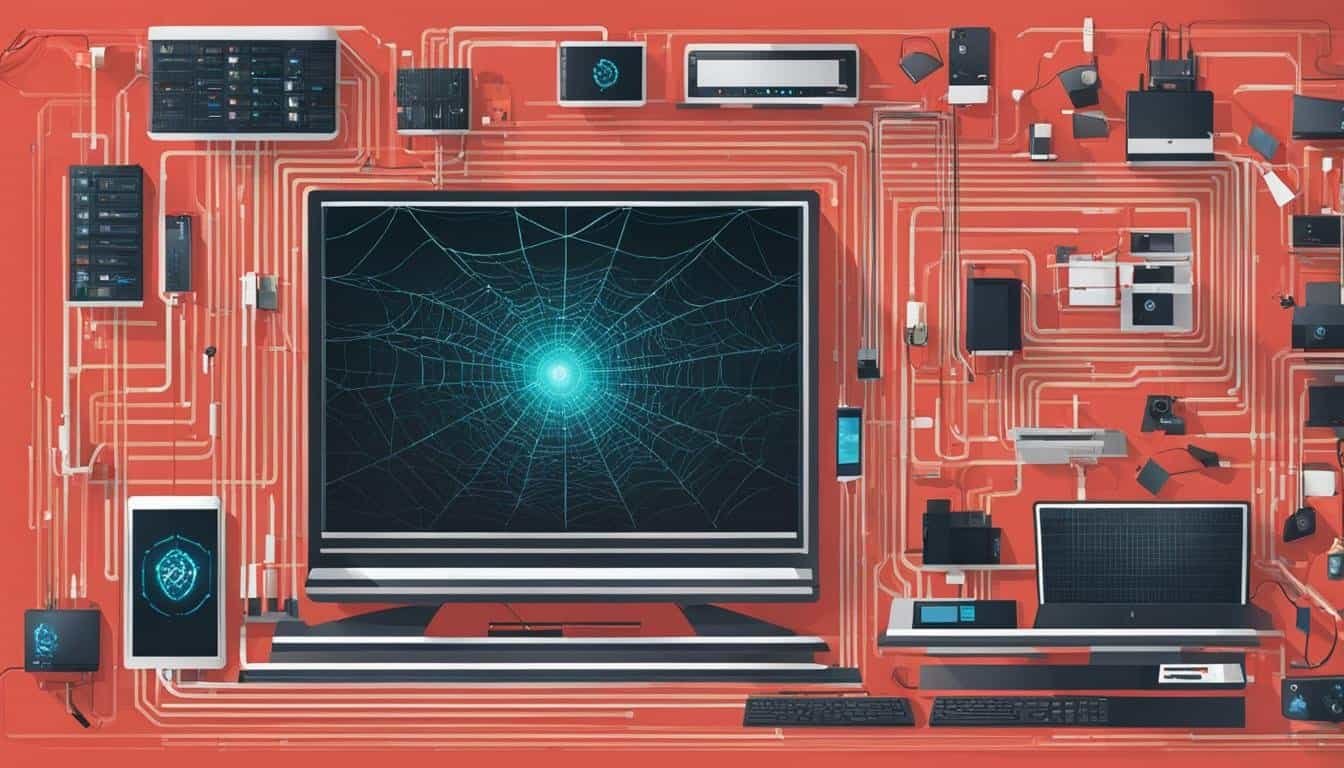Virtual reality (VR) has revolutionized the way we experience digital content, but for those without coding skills, it can be a daunting task. That’s where no code virtual reality comes in. With no code virtual reality tools, you can create immersive and interactive VR experiences without any coding.
No Code Virtual Reality platforms are becoming more and more popular as they provide an easy-to-use alternative for creating interactive VR experiences. Even non-technical individuals can create fully-functional VR experiences that can be used for education, training, gaming, and marketing purposes.
What is No Code Virtual Reality?
Virtual Reality (VR) has become an increasingly popular technology for creating immersive and interactive experiences. However, traditional VR development requires programming skills that can be challenging for non-technical individuals. This is where no code virtual reality comes in.
No code virtual reality refers to the process of creating VR experiences without any coding knowledge or skills. It allows anyone, regardless of technical expertise, to create and deploy VR experiences quickly and easily.
Why Choose No Code Virtual Reality?
No code virtual reality offers a plethora of benefits for those who want to create immersive VR experiences without any coding skills. Here are some reasons why you should choose no code virtual reality:
- Easy VR creation: No code virtual reality platforms make it easy for anyone to create VR experiences. With intuitive drag-and-drop interfaces and pre-built templates, even non-technical individuals can create interactive and immersive VR experiences in a matter of hours.
- Speed of development: Traditional VR development can take months, or even years, to complete. With no code VR platforms, however, you can bring your VR ideas to life in a matter of days or weeks. This speed of development can help you stay ahead of the competition and take advantage of emerging trends and opportunities.
- Cost-effectiveness: Traditional VR development can be expensive, requiring specialized skills and hardware. No code VR platforms, on the other hand, are more affordable and accessible, making VR development accessible to a wider audience. This cost-effectiveness can help you save money on development costs and invest more in marketing and user acquisition.
Overall, no code virtual reality is a great choice for anyone who wants to create compelling and engaging VR experiences without the need for programming skills. With the rise of no code platforms and tools, VR development has become more accessible and democratized, opening up new opportunities for businesses and individuals alike.
Types of No Code Virtual Reality Platforms
There are several no code virtual reality platforms available in the market that allow non-technical individuals to create immersive VR experiences without coding. These platforms offer various features and functionalities, and their ease of use and pricing vary. Here are some of the most popular no code virtual reality platforms:
| Name | Description | Pricing |
|---|---|---|
| CoSpaces | CoSpaces is a cloud-based platform that lets users create and share VR experiences using a drag-and-drop interface. It offers ready-made assets and templates, making it easy to create interactive VR environments. Users can also collaborate with others in real-time on projects. | Free trial available; pricing starts at $9.99/month for educators and $24.99/month for businesses |
| Figma | Figma is primarily a design tool, but it also offers a feature called “Smart Animate” that allows users to create interactive and animated prototypes, including VR experiences. It has a user-friendly interface and allows for collaboration with team members. | Free trial available; pricing starts at $12/month |
| A-Frame | A-Frame is an open-source framework for creating VR experiences using HTML. It provides a set of pre-built components that can be used to create VR scenes and interactions. It requires some basic coding knowledge but is still considered a no code VR platform. | Free |
CoSpaces
CoSpaces is a popular no code virtual reality platform that allows users to create interactive VR experiences using a drag-and-drop interface. It offers a library of ready-made assets and templates, and users can also upload their own 3D models and images. Its collaboration feature allows multiple users to work on a project simultaneously and see changes in real-time. CoSpaces is suitable for creating educational simulations, games, and marketing campaigns.
Figma
Figma is primarily a design tool, but it also offers a feature called “Smart Animate” that lets users create interactive and animated prototypes, including VR experiences. It has a user-friendly interface and allows collaboration with team members, making it suitable for businesses and organizations. Figma is also suitable for creating VR user interfaces, such as menu systems and control panels for VR experiences.
A-Frame
A-Frame is an open-source framework for creating VR experiences using HTML. It provides a set of pre-built components that can be used to create VR scenes and interactions. It also allows users to add custom components and scripts for more advanced functionality. While A-Frame requires some basic coding knowledge, it is still considered a no code VR platform because it simplifies the coding process and provides a user-friendly interface. A-Frame is suitable for creating interactive VR experiences and educational simulations.
Getting Started with No Code Virtual Reality
Creating virtual reality experiences without any coding skills is easier than you think. With a no code virtual reality platform, you can create immersive and interactive VR experiences without writing a single line of code. Here’s a step-by-step guide on how to get started:
Step 1: Choose a No Code VR Platform
There are several no code virtual reality platforms available in the market, including ZapWorks, Fologram, and Cospaces. Each platform has its own unique features and pricing options, so be sure to research and compare before making a decision.
Step 2: Set Up Your Environment
Once you’ve chosen a platform, it’s time to set up your VR environment. Most platforms have pre-built templates and assets that you can use. You can also upload your own 3D models and assets if you have them. Make sure to consider the layout and design of your environment as it will impact the user’s overall experience.
Step 3: Create Your VR Experience
With your VR environment set up, it’s time to start creating your VR experience. Most no code VR platforms use a drag-and-drop interface that allows you to easily add and customize elements such as buttons, text, images, and videos. You can also add interactive elements such as animations and sound effects to make your experience more engaging.
Step 4: Test and Optimize
Once you’ve created your VR experience, it’s important to test it thoroughly to ensure it is functioning properly. Make sure to check for any bugs or glitches and optimize your experience for maximum performance.
By following these steps, you can create your own immersive and interactive VR experience without any coding skills. So why wait? Start exploring the world of no code virtual reality today!
No Code Virtual Reality Examples and Use Cases
No code virtual reality provides individuals and businesses the opportunity to create immersive and interactive VR experiences with no prior coding knowledge or technical expertise. Here are some examples of how no code virtual reality is being used:
1. Gaming
No code virtual reality platforms such as PlayCanvas and CoSpaces allow game designers to create immersive 3D games without writing code. These platforms provide drag-and-drop interfaces, making it easy to add animations, sounds, and other interactive elements to games.
2. Education
Teachers and educators are using no code virtual reality to enhance learning experiences for students. Platforms such as Engage and ClassVR provide a range of educational simulations that offer users an immersive and interactive learning experience. For instance, students can explore historical sites, observe scientific experiments, or learn about different cultures in a virtual environment.
3. Marketing
No code virtual reality is being used to create innovative marketing campaigns that drive customer engagement. Brands such as Lexus and Coca-Cola have used platforms such as Unity and Sketchbox to create interactive VR experiences that showcase their products and services. These experiences allow customers to explore products in a virtual environment while providing the opportunity for brands to collect valuable consumer data.
4. Real Estate
No code virtual reality platforms such as Yulio and Transported provide real estate professionals the ability to create immersive virtual tours of properties. This allows potential buyers to explore properties in a virtual environment, providing a more realistic experience than traditional 2D photos or videos.
No code virtual reality is revolutionizing the way individuals and businesses create immersive and interactive experiences. The flexibility provided by these platforms allows for a range of use cases, from gaming and education to marketing and real estate.
Tips and Tricks for Creating No Code Virtual Reality Experiences
Creating immersive and interactive VR experiences without coding is easier than ever with no code virtual reality tools. Here are some tips and tricks to help you get the most out of your VR development:
- Start with a clear vision: Before you start building your VR experience, have a clear idea of what you want to achieve and what your users should take away from it. This will help you focus your efforts and create a more cohesive experience.
- Design for the user: VR experiences are all about immersion, so make sure your design puts the user at the center of the experience. Consider factors like movement, scale, and feedback to create a sense of presence and engagement.
- Optimize for performance: VR experiences require a lot of computing power, so make sure your design is optimized for performance. Use low-poly models, optimized textures, and minimal lighting to ensure a smooth experience for your users.
- Experiment with interactions: VR experiences offer a unique opportunity to create rich and interactive environments. Experiment with different types of interactions, like gaze-based selection, hand gestures, and voice commands, to create a sense of agency and interactivity for your users.
- Test and Iterate: Like any design process, creating VR experiences requires testing and iteration. Use user feedback to refine your design, and don’t be afraid to experiment with different approaches until you find what works best.
By following these tips and tricks, you can create immersive and engaging VR experiences without having to write a single line of code.
No Code Virtual Reality vs. Traditional Virtual Reality
When it comes to virtual reality development, there are two approaches: traditional, code-based development, and no code virtual reality development. While both have their advantages and disadvantages, choosing one over the other largely depends on the complexity of the VR experience you want to create and the technical expertise of your team.
Traditional Virtual Reality
Traditional virtual reality development involves creating VR experiences using programming languages such as C++, Unity, or Unreal Engine. While this approach provides developers with complete control over the VR environment, it requires a higher level of technical expertise and a longer development cycle. Traditional virtual reality development is typically more suited for creating complex and large-scale VR experiences for high-end VR devices.
No Code Virtual Reality
No code virtual reality, on the other hand, allows non-technical individuals to create immersive and interactive VR experiences without any coding skills. While there are limitations to the extent of control and customization available in no code VR, it is a much faster and cost-effective way to create VR experiences. This approach is best suited for creating simple to medium complexity experiences that can be deployed on a variety of VR devices.
The table below summarizes the key differences between traditional and no code virtual reality development:
| Traditional VR Development | No Code VR Development |
|---|---|
| Requires programming skills and expertise | No coding skills required |
| Longer development cycle | Shorter development cycle |
| Complete control over VR environment | Limited control over VR environment |
| Best suited for complex VR experiences | Best suited for simple to medium complexity VR experiences |
In general, traditional virtual reality development is more suited for experienced developers who require full control and customization over the VR environment. No code virtual reality development, on the other hand, is a more accessible and user-friendly option for individuals and businesses looking to create immersive and interactive VR experiences without significant technical expertise or resources.
No Code Virtual Reality Future Trends and Innovations
No code virtual reality is a rapidly evolving field that is seeing new innovations and trends emerge. Here are some of the top trends and innovations to look out for in the coming years:
- Advancements in AI: Artificial intelligence is being integrated into no code virtual reality platforms to enhance the user experience. AI-powered tools can create more realistic environments and interactions, making VR experiences even more immersive and engaging.
- Increased interactivity: As no code virtual reality becomes more sophisticated, users will be able to interact with virtual environments in more ways. This could include touch-based gestures, voice commands, and more.
- Expanded use cases: As more businesses and individuals discover the benefits of no code virtual reality, we can expect to see a wider range of use cases emerge. From training simulations to virtual store experiences, the possibilities are endless.
- Integration with other technologies: No code virtual reality platforms will likely become more integrated with other technologies, such as augmented reality and mobile devices. This could lead to even more innovative and engaging VR experiences.
No code virtual reality is still a relatively new field, and we can expect to see many more exciting developments in the years to come. Keep an eye on the latest trends and innovations to stay ahead of the curve!
No Code Virtual Reality Success Stories
Many businesses and individuals have successfully used no code virtual reality tools to create immersive and interactive experiences. Here are some examples:
“With no coding experience, I was able to create a VR experience that showcased our product and helped us secure a new client. No code virtual reality tools have been a game changer for our business.” – John, Small Business Owner
| Industry | Use Case | VR Platform |
|---|---|---|
| Real Estate | Virtual property tours for remote clients | Wonda VR |
| Education | Virtual science lab simulations | CoSpaces Edu |
| Marketing | 360° video advertising campaign | InstaVR |
These success stories demonstrate the versatility and effectiveness of no code virtual reality tools in a variety of industries and use cases. With the right platform and creativity, anyone can create engaging and impactful virtual reality experiences without any coding skills.
FAQ – Frequently Asked Questions about No Code Virtual Reality
Q: What is no code virtual reality?
A: No code virtual reality is a method of creating virtual reality experiences without any coding skills. It allows non-technical individuals to create immersive and interactive VR experiences using simple drag-and-drop tools and platforms.
Q: How does no code virtual reality differ from traditional VR development?
A: Traditional VR development typically requires advanced coding skills and knowledge of specialized software and tools. No code virtual reality, on the other hand, simplifies the process by providing intuitive and easy-to-use platforms and tools that require no coding or technical knowledge.
Q: What are the benefits of using no code virtual reality?
A: No code virtual reality offers several benefits, including ease of use, speed of development, and cost-effectiveness. It allows individuals and businesses to create immersive and interactive VR experiences without hiring expensive developers or investing in specialized software and tools.
Q: What are some popular no code virtual reality platforms available in the market?
A: Some popular no code virtual reality platforms include CoSpaces, Fader, and VRdirect. Each of these platforms offers unique features and pricing options, making it easy for users to find one that suits their needs and budget.
Q: How do I get started with no code virtual reality?
A: To get started with no code virtual reality, you must first choose a platform that suits your needs and register for an account. Once you have created an account, you can start building your virtual reality experiences using the platform’s intuitive drag-and-drop tools.
Q: What are some tips for creating engaging and immersive no code virtual reality experiences?
A: Some tips for creating engaging and immersive no code virtual reality experiences include designing a visually appealing environment, creating interactive elements that respond to user input, and optimizing performance by minimizing the use of complex animations or graphics.
Conclusion
No code virtual reality offers an exciting new way for individuals and businesses to create immersive and interactive VR experiences without any coding skills. With the availability of intuitive and easy-to-use platforms and tools, anyone can now explore the world of virtual reality and unlock new opportunities for learning, marketing, and customer engagement.




0 Comments